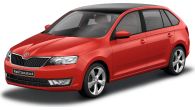Renault has finally gotten a handle on what Australians want - and has launched a GT-Line variant of the Meganes to give to us. The hatch and newly introduced wagon join the line-up as part of a mid-life upgrade and prioritise driver involvement over vehicle acceleration.
What they miss in a straight line they more than make up for when the roads start to twist and tighten. Toss in a decent ride over broken surfaces and it’s easy to see why Renault Australia expects the GT-Line to give the Megane a decent kick in sales.
VALUE
Entry to the GT-Line club starts at $26,490 for the 2.0-litre petrol hatch with a better-than-average continuously variable transmission. The 1.5-litre turbodiesel with a dual-clutch automatic is another $2500. Step up to the leather-clad interior of the GT-Line Premium Pack versions and the petrol model is $29,990; the diesel $32,490. Wagon versions of all models attract a $1500 premium over their hatch counterparts.

GT-Line versions are easily identified by the honeycomb front grille flanked by boomerang-shaped daytime running lights, 17-inch alloy wheels and a revised chassis and suspension tune. Beyond the “Cool Grey” heated leather seats, the Premium Pack adds a sunroof, reversing camera with overlaid guidelines and driver assistance software.
TECHNOLOGY
The drivetrains carry over, making the Visio software the biggest innovation in the facelifted Meganes. The system uses windscreen-mounted cameras to scan the road ahead and will automatically switch the headlights from high to low beam if it detects approaching lights, the tail-lights of a car ahead or street lights indicating the vehicle is in an urban area. The system includes a lane-departure warning chime if it detects the Megane is starting to cross the white lines.
DESIGN
The Renault exterior has aged well and still looks contemporary from any angle. It’s a different story inside where the layout has some obvious shortcomings against its competition - including a marked absence of cupholders. The single drinks stowage spot nestles at the front edge of the centre console, meaning tall bottles, or large cups of coffee, can block access to some of the sound system controls.
The sound system itself has been overhauled and is operated with a logical joystick/button setup between the seats, rather than the in-car remote seen on earlier versions. The seats are wonderfully comfortable but the pedals are slightly offset to the right. It isn’t huge and drivers adjust within moments. The steering wheel adjusts for reach and height but Carsguide suspects the inclined instrument panel may be prone to reflections with the sunroof open. A road test will tell. Rear legroom is modest to the point not many adults will be prepared to spend much time down back. That’s common in the small-car segment so it’s more of a caution than a criticism.
SAFETY
Renault stacks up well on the safety front. ANCAP rates it a five-star and it earned a score of 35.83/37, with the local crash-testing authority noting of the offset test: “The passenger compartment held its shape well. There was a slight risk of serious chest injury for the driver”. Six airbags are standard and the fundamentals - steering, chassis and brakes - are good enough to avoid most problems in the first place.
DRIVING
The driving experience has been as sharply honed as the price on the GT-Line Meganes. The chassis and suspension are tauter than regular models without losing the ability to absorb smaller bumps. The steering has always been a Megane highlight and that continues, with a well-weighted heft and precise feedback on what the front wheels are doing. The focus is on handling rather than outright power, so it shares its engines with the rest of the range. The naturally aspirated 2.0-litre is the straight-line hero but a 0-100km/h time of 10.3 seconds shows it isn’t a hot hatch (the wagon takes another 0.3 of a second).
The engine is matched to a continuously variable transmission that doesn’t exhibit the dreaded drone unless the pedal is to the floor. The 1.5-litre turbodiesel is the pick of the engines and has a better engine note than most oilburners when underway and there’s only a hint of diesel clatter when the engine is cold and idling. The dual-clutch auto can hesitate on take-off and occasionally slurs when chasing a higher or lower cog with the foot down. Less enthused driving is its preferred mode and in those conditions it is hard to fault. Natural rivals include the better-sorted cars in the small-car class such as the Ford Focus and Mazda3.
VERDICT
The GT-Line Meganes are for drivers who value on-road dynamics without wanting to break the sound barrier. It’s a smart formula on our over-restricted roads and is at least a match for the local suspension tuning that has earned accolades for the South Korean carmakers.
Renault Megane 2013: GT-Line
| Engine Type | Diesel Turbo 4, 1.5L |
|---|---|
| Fuel Type | Diesel |
| Fuel Efficiency | 4.4L/100km (combined) |
| Seating | 5 |
| Price From | $6,820 - $9,570 |
| Safety Rating |
|
Pricing Guides









































.jpg)





































.jpg)
.jpg)
.jpg)
.jpg)
.jpeg)
-w.jpg)



.jpg)


Comments